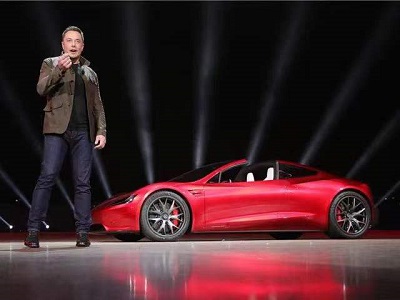In 2008, Tesla installed lithium-ion batteries on the Roadster, a sports car that has completely subverted the century-old automobile industry.
A mythical car story of lithium batteries
So far, lithium-ion batteries have completed three generations of technology: lithium cobalt oxide cathode is the first generation, lithium manganate and lithium iron phosphate Lifepo4 batteries are the second generation, and ternary lithium is the third generation. The third-generation lithium-ion batteries are composed of four major parts: Cathode electrode, anode electrode, electrolyte and separator.

Lithium iron phosphate and ternary lithium are the most preferred mainstream formulations of major automobile companies. The former is low in price, stable and safe, but has low energy density and poor low-temperature performance. The latter has high energy density and supports fast charging, but it is expensive and has poor thermal stability.
Two major ceilings: energy density and safety issues.
But both lithium iron phosphate and ternary lithium will soon face two major ceilings: energy density and safety issues.
First of all, the current energy density limit of liquid lithium-ion batteries is about 280Wh/kg. Even if a silicon-based alloy is introduced into the anode electrode, it is difficult to break the upper limit of the density of 400Wh/kg.
The Ministry of Industry and Information Technology pointed out in “Made in China 2025”: “By 2025 and 2030, the energy density of power battery cells must reach 400Wh/kg and 500Wh/kg, respectively.”
Failure to reach the energy density threshold means that they cannot get new energy subsidies that are highly linked to energy density, which is enough for ordinary consumers to “say no” to electric vehicles in an instant.
Secondly, the highly flammable liquid organic electrolyte in liquid lithium-ion batteries is generally considered to be the first culprit behind the frequent spontaneous combustion accidents of electric vehicles.
In 2019, 33,000 new energy vehicles were recalled by the State Administration for Market Regulation. The number of recalls due to power battery problems was 6,217 units, accounting for 18.7% of the total recalls of new energy vehicles.
In 2020, 357,000 new energy vehicles were recalled, of which 112,000 were recalled due to defects in the three-electric system, accounting for 31.3% of the total number of new energy vehicle recalls.
In the “Electric Vehicle Safety Report” issued by the China Electric Vehicles Association, spontaneous combustion accounts for 31% of the causes of domestic new energy vehicle fire accidents. If the flammable liquid organic electrolyte does not withdraw from the stage of history, then the concept of zero spontaneous combustion is Unable to achieve, the long-term vision of electric vehicles to completely replace fuel vehicles will not be realized
To be continued…..
 +8613906047998
+8613906047998




